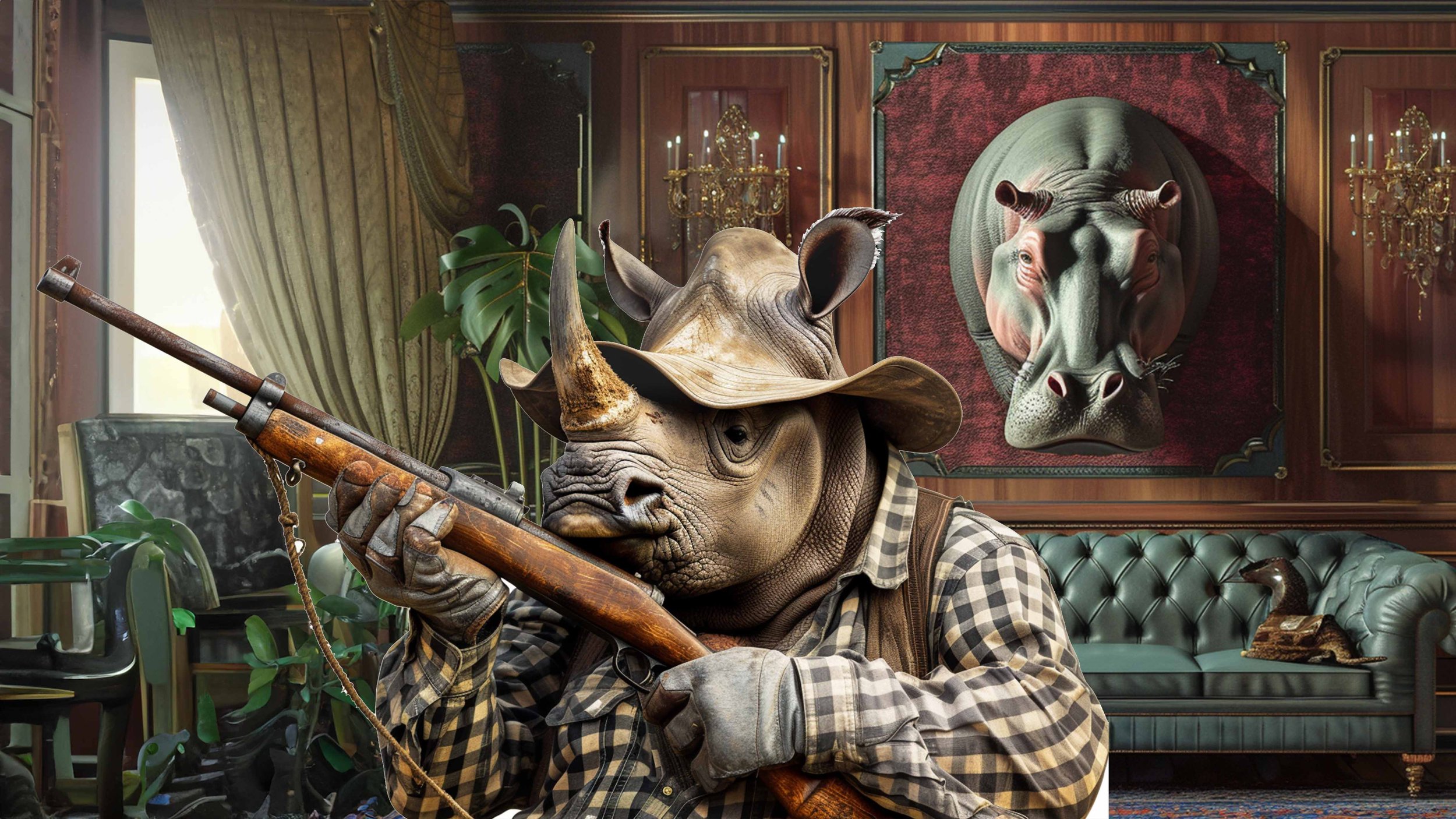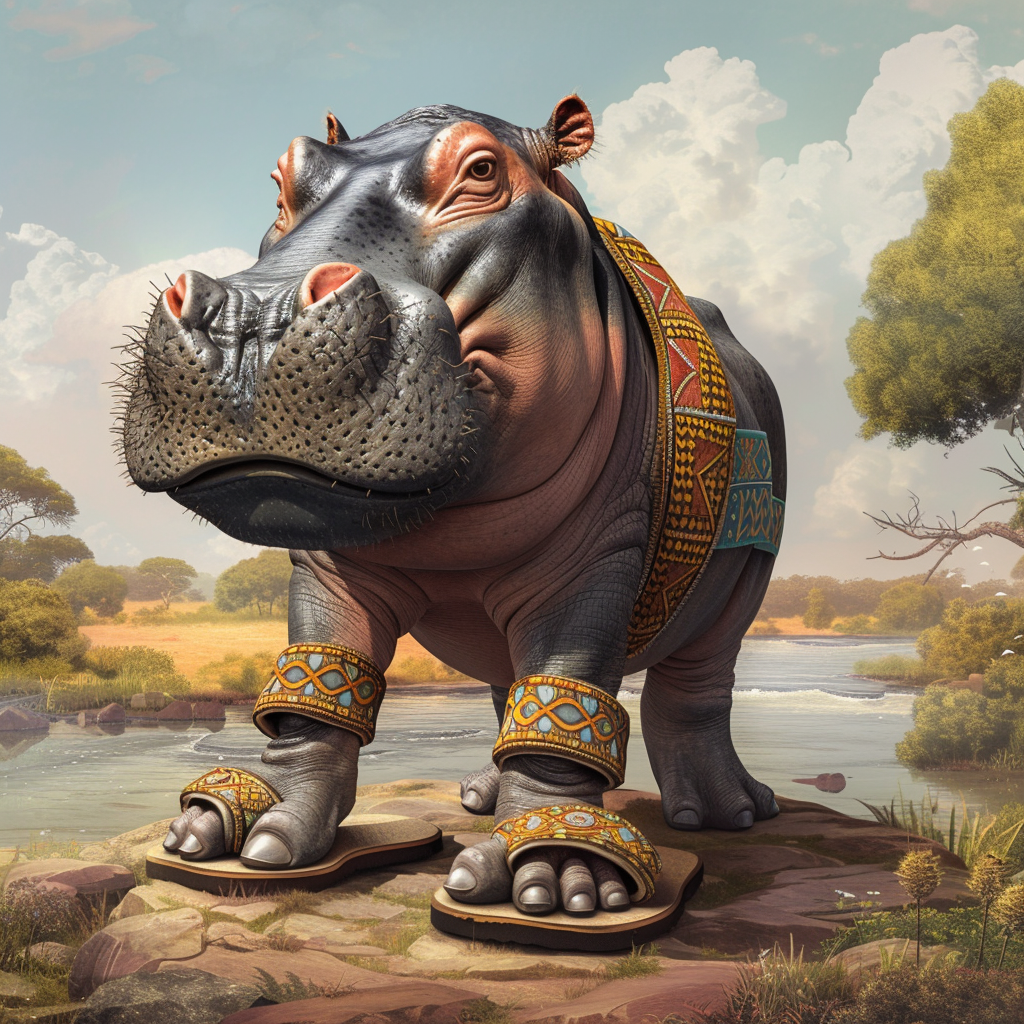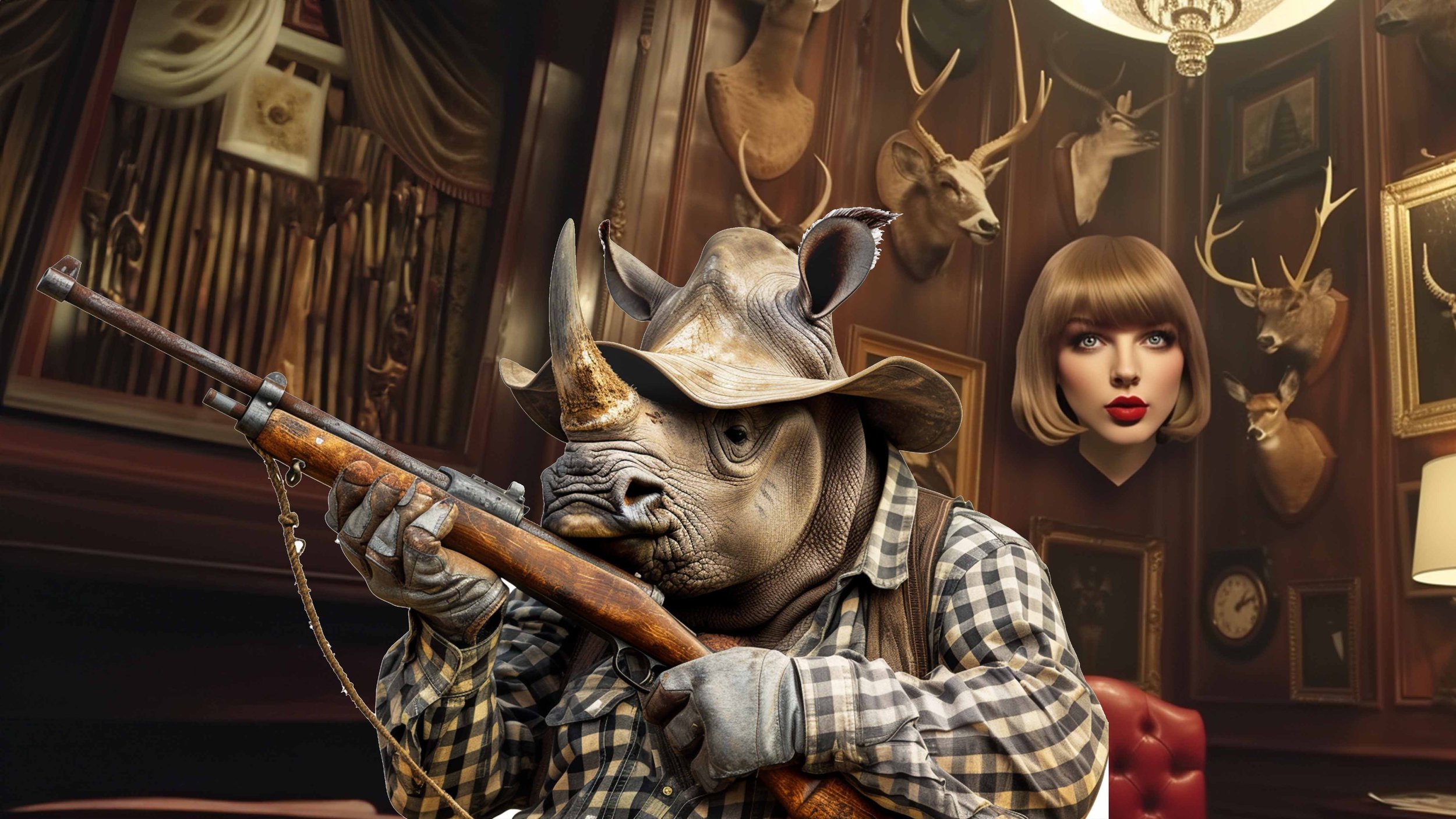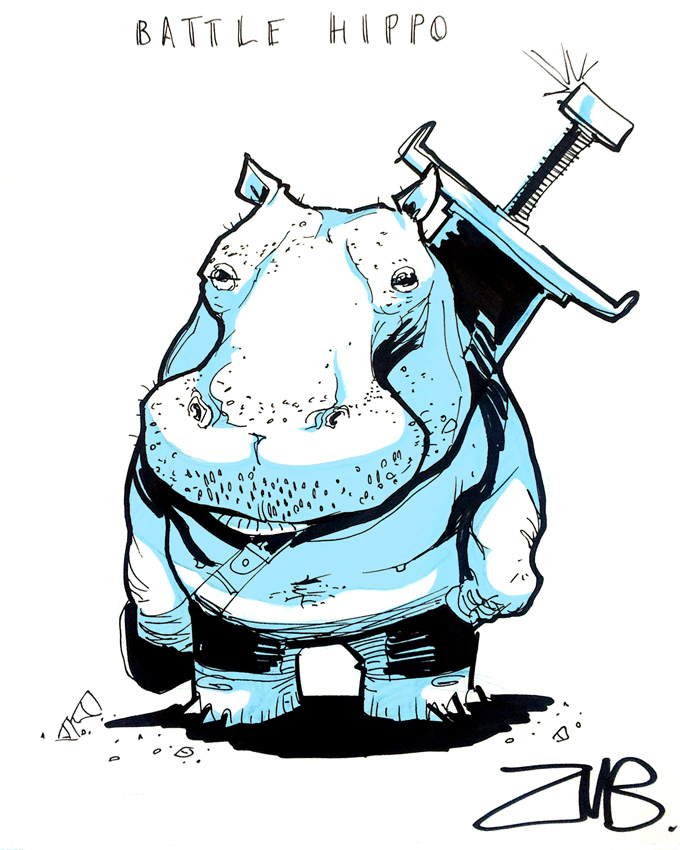Finchbearer
 Istar
Istar
Well…I was comparing the mention of flip flops to a snake - pointless against the might of Birkenstocks. Okay, and crocs.
 Istar
IstarBirkenstocks perish the moment latte macchiatos run out of stock, and crocs belong to the stone age. Flip flops are eternal.Well…I was comparing the mention of flip flops to a snake - pointless against the might of Birkenstocks. Okay, and crocs.
 Istar
Istar Istar
IstarI’ll be completing my thesis on hippos VS rhinos later this year.This is an old and outdated thread with an irrelevant and frankly trite subject matter in discussion. So with that being said, I think we can all agree that this superfluous topic requires further investigation and full consideration of all known facts.
Hippo, binomial name; Hippopotamus amphibius, belonging to the Hippopotamidae family are native primarily to sub-Saharan Africa and inhabit aquatic areas of land, mostly spending their time dwelling in and near bodies of water such as rivers and lakes. They are large, mostly herbivorous mammals that employ the use of water and mud to protect themselves from the sun.
Despite being semi-aquatic, hippos are not known to be good swimmers and instead use buoyancy to either walk or bounce along the bed of the lake or river in which they spend the vast majority of their time.
This is why many people may consider hippos to be cumbersome, lumbering or even docile animals by way of how they move slowly through the water, however, this is also why they have the fearsome reputation of being one of the deadliest animals throughout sub-Saharan Africa, with estimates being anywhere from several hundred to thousands of deaths every year caused by the animal where people may have gone to bathe or collect water or themselves.
Hippos can also use the water to their advantage by using it to conceal their large bodies with only their by comparison small snout and ears, barely visible above the water. They are extremely territorial, especially around their young and usually make their kills by using their enormous and powerful jaws [1].
Another sub-species of hippo currently in existence is the pygmy hippopotamus, binomial name, Choeropsis liberiensis, a small hippopotamid, native to the forests and swamplands of West Africa.
Let’s take a look at the rhino by comparison.
There are five species of rhino currently in existence within the family of Rhinoceroteridae that comprises firstly of the White Rhinoceros, scientific name, Ceratotherium simum. This is the largest species of rhino that inhabits the grasslands and savannas of southern and eastern Africa.
Black Rhinoceros, binomial name, Diceros bicornis, also native to Africa is found in more varied environments that include grasslands, savannas, and even woodlands.
Indian Rhinoceros, binomial name, Rhinoceros unicornis [2], native to India and Nepal. This rhino inhabits grasslands, swamps, forests in the foothills of the Himalayas and floodplain areas along rivers.
Javan Rhinoceros, binomial name, Rhinoceros sondaicus. The Javan rhinoceros is one of the most critically endangered large mammals in the world, with only a small population remaining in Indonesia in the wild. Its natural habitat is in tropical forests and lowland swamp areas of the islands Java and Sumatra.
Sumatran Rhinoceros, binomial name, Dicerorhinus sumatrensis. Just like the Javan rhinoceros, the Sumatran rhinoceros is also has the status of being critically endangered, with a population restricted to fragmented habitats in Indonesia and Malaysia. Its natural habitat is dense tropical rainforests and hilly terrain, as well as swamp areas and forests found on the island of Sumatra.
Rhinos, like hippos are also large mostly herbivorous mammals found in Africa, with the exception of also inhabiting areas of Asia, which hippos do not. They are known for their horn [3], and thick protective skin, although compared to hippos, rhinos are not as aggressive and are unlikely to attack unless provoked, avoiding confrontations where possible. If a rhino should attack, they employ the use of their horns, that can cause severe injury or even death depending on where the horn has hit the target. Trampling or charging may also be the type of confrontational behaviour that a rhino may use if specifically threatened or provoked.
It may be beneficial to take a look at the prehistoric relatives of both animals in order to ascertain a well rounded answer to this complex question that ban has proposed.
A prehistoric ancestor of the hippo is Hexaprotodon, a large, semi-aquatic mammal that lived during the Pleistocene epoch in modern day Africa, Asia and even Europe. This species was far smaller than modern hippopotamuses, with some individuals estimated to be about the size of a domestic pig [4]. The teeth found on skulls of Hexaprotodon [5] have found to be longer and more pronounced than that of their modern day relative, that could potentially have delivered an equally deadly bite, though with the animal being much smaller and weighing far less, the force of the bite would have been less effective than its modern day relative.
A prehistoric ancestor of the rhino is Stephanorhinus. This genus of rhino lived in Europe and Asia during the Pleistocene epoch and was similar in size to modern rhinos along with possessing two horns. It had a more robust build and different dental structure compared to living rhinoceroses. This animal may have been more territorial or openly aggressive or may have been more similar to modern day rhino’s in behaviour, however this animal may have been stronger and with not one but two horns could have been formidable when provoked or defending itself.
Now to the question that has been proposed, utilising all of the data collected; hippo VS rhino, who would hypothetically win in a head to head fight?
We must consider that this would be a highly unlikely event to occur in real life, with both animals living in different parts of the world and in different habitats, never mind the ethical and moral implications of making two large and endangered species of animal fight one another.
However for the sake of hypotheticals, we should firstly consider the size and weight of each animal:
The largest of each animal would be the male sex of each, with the male Hippopotamus amphibius weighing up to 3,300 to 7,000 pounds and measuring up to 3.5 to 5 metres from head to tail.
The largest species of rhino is the white rhino, or Ceratotherium simum, and weighs up to 4,000 to 5,000 pounds, and measures up to 3.7 to 4 metres in length from head to tail.
So we have our two contendants. Next we must consider how they would be induced to fight. It would be likely, given the hippo’s aggressive and territorial nature that it would be the first to initiate the fight. The rhino would be more responsive by the provocation, and this is how the fight would commence. The hippo would probably try to strike first, but the rhino’s thick skin may well bear the brunt of enough force trauma from the hippo’s bite to make its own strike using its formidable horn. The hippo also has thick skin but is not as thick as a rhino’s and therefore may struggle to sustain a traumatic blow from the charge of the rhino’s horn. Both may fight until one or the other has established dominance, as with many male mammals, this may be the deciding factor in who ‘wins’ the fight.
However, we must also take into consideration the nature of each beast, with the hippo being more openly aggressive and persistent until it has warded off the perceived threat, and so the hippo could logically speaking be more likely to win.
However, could we assume that with the rhino’s non confrontational nature, that it could considered the more noble beast of the two.
Now onto far more pressing issues: which is better? Birkenstocks or Crocs?
- The bite force of an adult hippopotamus can range anywhere from 1,100 to 1,800 pounds per square inch (psi).
- Rhinoceros unicornis does indeed elude to the mythical creature known as the unicorn, meaning ‘one horned creature’. In this instance it also has the coincidentally sad connection to the critically endangered status of this particular species of rhino.
- The horn or horns of a rhino comprises of keratin rather than bone, and are softer than they appear. The animals use their horns for mating, territorial behaviour and digging for food.
- Hexaprotodon typically weighed around 440 to 1,100 pounds, compared to 3,300 to 7,000 pounds that a modern day hippo weighs.
- Hexaprotodon in Latin means ‘six front teeth’.
Here in the Netherlands it is a well-known fact that socks in sandals are for Germans. As much as I like my neighbours' food, I am not taking style tips from them. The question of wearing such shoes, whatever form they take, in winter is heresy to begin with.Hmm, you can’t wear flip flops all year round, and unless it’s a hot day you are going to look strange wearing them, especially with trousers, whereas crocs and birks can be worn all year round, in winter just wear socks underneath.
 Istar
Istar Myth Weaver
Myth Weaver

 Myth Weaver
Myth Weaver
I hate AI with 90% of my heart. The other 10% is laughing at the funny Rhino.
 Myth Weaver
Myth Weaver
 Istar
IstarWhat was your text prompt? ‘Include a taxidermied Taylor Swift and mount her on the wall behind the triumphant rhino’??Might as well enjoy the toy aspects, like Taylor Swift, it doesn't seem to be going away... No matter how much I'd appreciate that. At least AI has entertainment value, heh heh.

 Myth Weaver
Myth WeaverWhat was your text prompt? ‘Include a taxidermied Taylor Swift and mount her on the wall behind the triumphant rhino’??
 Sage
Sage Troubadour
Troubadour Myth Weaver
Myth Weaver Istar
IstarBravo mans, bravoBoth are nervous and sensitive to their territories, but the hippo is more sensitive. Additionally, African buffaloes are very nervous wild cows and are immediately provoked by the presence of other animals close to their herds.
The hippo has weaker legs than the rhino because most of the time it is floating in water and doesn't often use its legs to support its overweight body. However, it is very powerful and resistant in water.
Rhino is faster in movement and turning to the sides. Like a hippo, it is very powerful and resistant, especially in a long fight with another Rhino or a pack of lions. It can recognize a few lions around itself simultaneously and turn towards each one in less than a second. The hippo is slower than the rhino in such situations on land, and its turn is slower than the rhino. I think this is because of its weaker legs and heavier body.
Hippo has a very wide mouth, wider than all land animals, with some long fangs. The most deadly one is a tooth in the middle of its lower jaw. If it moves its head from down to up violently, and that tooth can touch the lower part of the rhino's neck, it can be a fatal hit to the rhino, but usually the rhino lowers its head and takes its hard horn towards the head and mouth of its competitor, while moving it up rapidly with the help of its powerful neck. This can break the jaws or head bones of a hippo.
Usually, hippos, rhinos, buffaloes, and elephants avoid engaging with each other due to their similar powerful physique and defensive tools. Being injured in African deserts is a great challenge that can lead to death, and the animals in Africa are instinctively aware of this danger.
 Troubadour
TroubadourThank youBravo mans, bravo
Not thesis material like mine, but we can’t all be brilliant now can we.